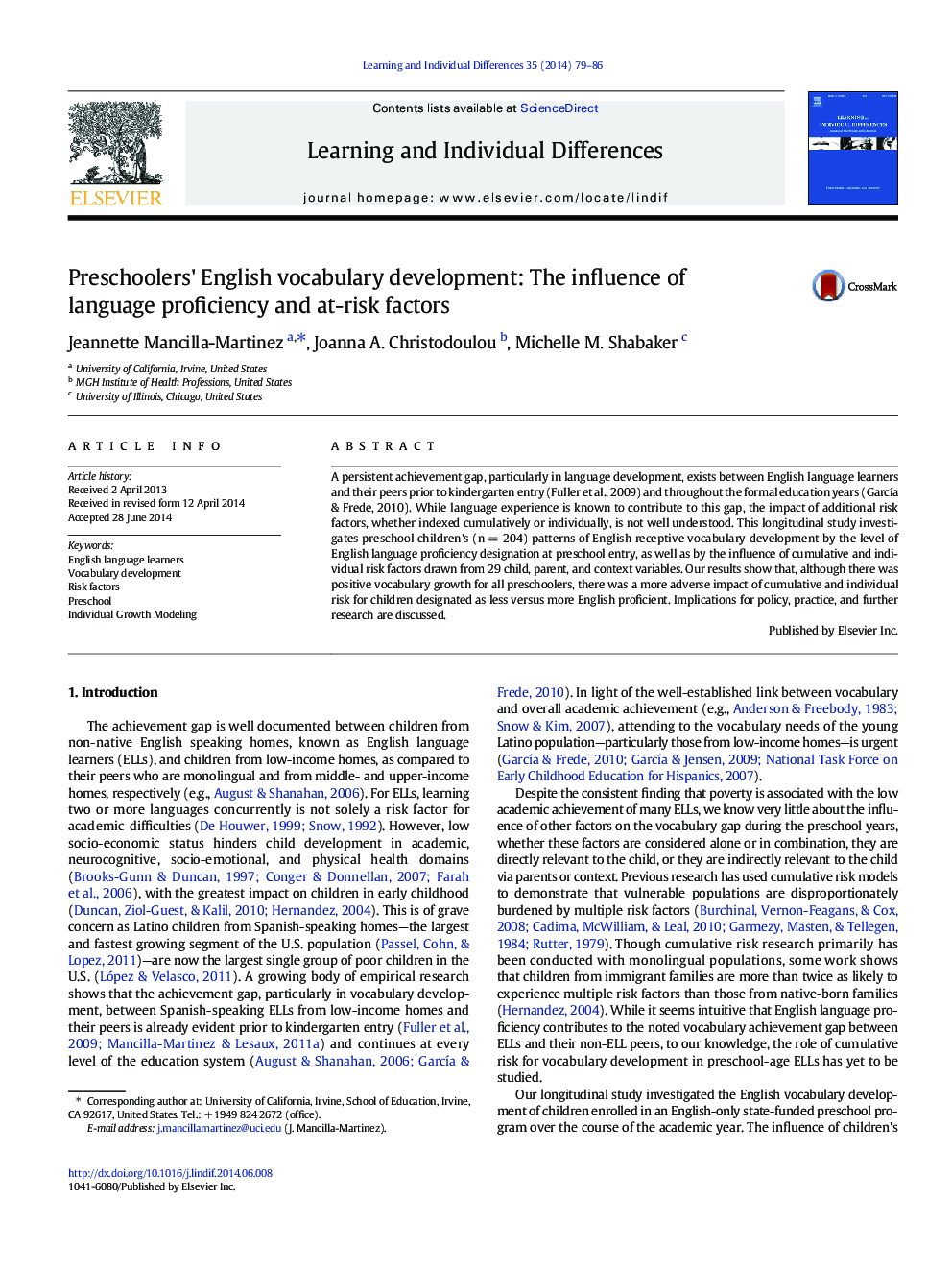| Article ID | Journal | Published Year | Pages | File Type |
|---|---|---|---|---|
| 6845051 | Learning and Individual Differences | 2014 | 8 Pages |
Abstract
A persistent achievement gap, particularly in language development, exists between English language learners and their peers prior to kindergarten entry (Fuller et al., 2009) and throughout the formal education years (GarcÃa & Frede, 2010). While language experience is known to contribute to this gap, the impact of additional risk factors, whether indexed cumulatively or individually, is not well understood. This longitudinal study investigates preschool children's (n = 204) patterns of English receptive vocabulary development by the level of English language proficiency designation at preschool entry, as well as by the influence of cumulative and individual risk factors drawn from 29 child, parent, and context variables. Our results show that, although there was positive vocabulary growth for all preschoolers, there was a more adverse impact of cumulative and individual risk for children designated as less versus more English proficient. Implications for policy, practice, and further research are discussed.
Related Topics
Social Sciences and Humanities
Psychology
Developmental and Educational Psychology
Authors
Jeannette Mancilla-Martinez, Joanna A. Christodoulou, Michelle M. Shabaker,
